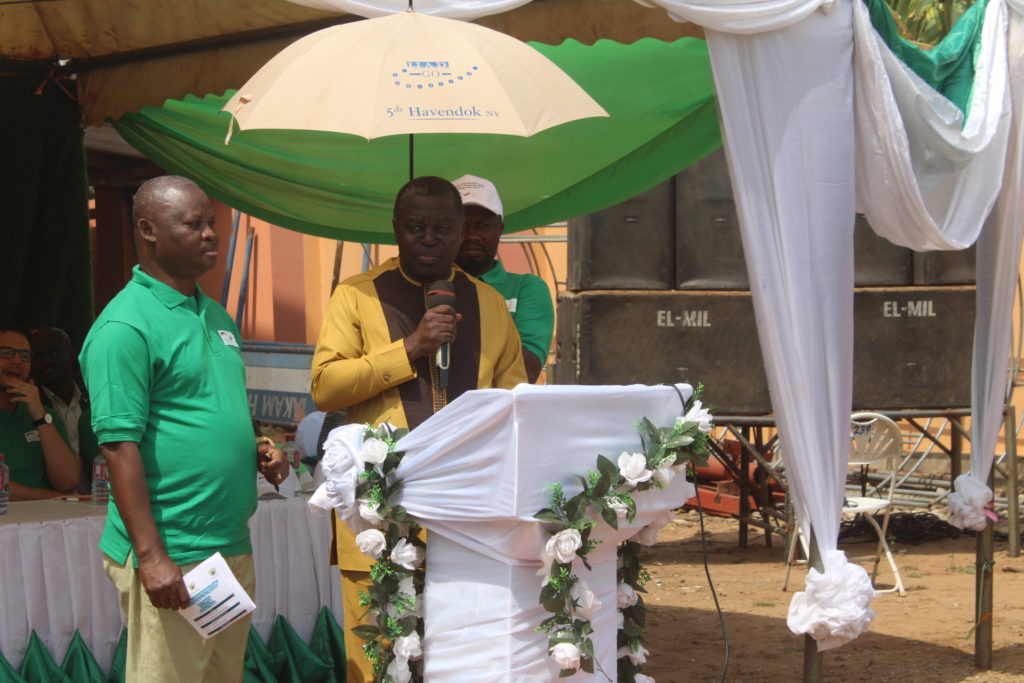Bono East, Savanna Regions To Benefit From Forest Restoration Programme
A Forest landscape restoration project dubbed “Forest Landscape Restoration through Sustainable Wood Energy Value Chain” has been launched in the Kintampo Municipality of Ghana’s Bono East Region.
The project launched on February 6, 2020 and, sponsored by the German Government and facilitated by German Cooperation, aims at contributing to the implementation of Ghana’s National Climate Policy. It also aims at improving the framework conditions for sustainable forest management and wood energy supply in the country.
To this end, the project will ensure the establishment of 300 hectares of woodlots for sustainable wood energy production as well as the rehabilitation of 700 hectares of degraded natural forests in designated areas.
The project, which will be implemented in 10 selected communities in the Bono East and Savanna Regions, will also oversee the introduction of energy-efficient technologies for charcoal kilns and cooking stoves.
Speaking at the launch of the project, Deputy Minister for Lands and Natural Resources Mr. Benito Owusu-Bio highlighted the relevance of forest resources to the livelihoods of communities around them.
According to him, over 80% of people living around forest areas depend on the forest resources for wood fuel, water resources, medicine, shelter and climate regulation.
This, he said, steers the need to address deforestation—a canker that has eaten so deep into Ghana’s natural resources.
The €4.5 million project is in partnership with Ghana’s Ministry of Lands and Natural Resources, the Ministry of Energy, and other partner institutions in Ghana involved in restoring forest landscape. Also part of this project will be small entrepreneurs and organised producer groups from several communities.
Other institutions supporting the implementation of this program are the Netherlands Committee of the International Union for the Conservation of Nature working through A Rocha Ghana, the International Union for Conservation of Nature, and Tropenbos Ghana.
Deputy Head of Development Cooperation at the German Embassy in Ghana, Mr. Robin Cordes, reiterated Germany’s commitment to supporting Ghana to achieve the Sustainable Development Goals (SDGs).
Statistics
Recent studies show that a whopping 30 million cubic metres of firewood and charcoal are consumed every year in Ghana. This corresponds to around 85% of the wood extracted.
 Almost 600,000tonnes of charcoal was produced in 2016 in the country with the Bono East Region being a major producing area, accounting for 34.35% of the production.
Almost 600,000tonnes of charcoal was produced in 2016 in the country with the Bono East Region being a major producing area, accounting for 34.35% of the production.
Ghana’s northern regions however are the second highest charcoal producing areas with 26.74% production while the Western and the Greater Accra Regions are the least producers with 0.003% and 0.005% respectively.
It is projected that Ghana’s increasing population would lead to the increase in demand for charcoal to 2.8 million tonnes by 2050.
Unfortunately, the felling and burning of trees for charcoal production has left forest areas brown―a slow-burning environmental disaster. It has further threatened the survival of valuable and rare species of both fauna and flora.



